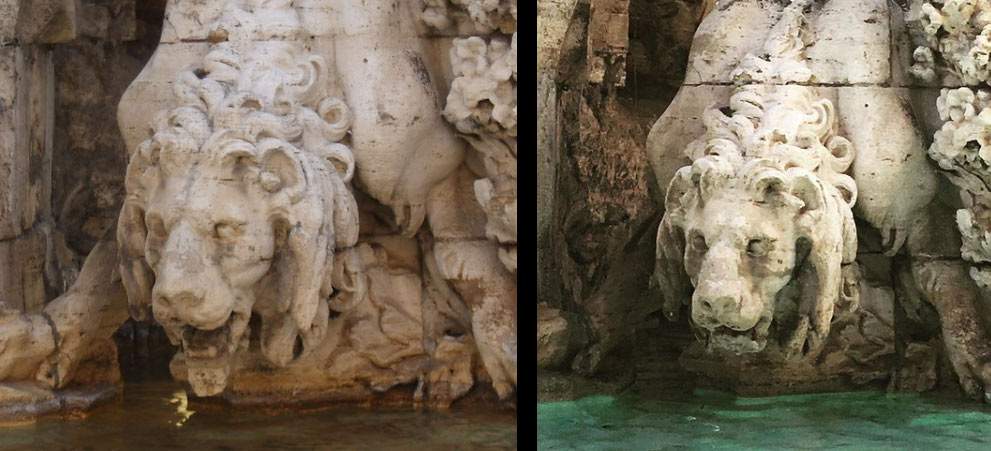The story of the damage to the lion of the Fountain of the Four Rivers, Gian Lorenzo Bernini ’s masterpiece in Piazza Navona, has not yet been closed. The damage was first reported in late 2020 by Teodoro De Giorgio in theHuffington Post, following a report by art historian Martin Raspe: the well-known blog questioned who was responsible for the damage, leaving the field open to several hypotheses. A few days later, the Capitoline Superintendency specified that the damage had occurred last August 18 and was due to the wear and tear of a metal anchor pin that held the lion’s jawbone: the breakage of the pin allegedly caused the detachment of the portion of the sculpture, which broke into three fragments, as the Superintendency later further explained to us in detail.
De Giorgio again now opens to the hypothesis that the damage was caused during maintenance operations. In fact, the art historian reports two people who got in touch with him claiming to have “witnessed the damage and to be able to provide, with a high sense of civic duty, relevant information.” The two “eyewitnesses,” De Giorgio continues, “available to give their statements to the competent bodies, report that the detachment of the lion’s jaw would have occurred when the tank was empty, on the morning of August 18, 2020, due to the western contact of a worker during the cleaning of the Fountain of the Four Rivers.”
“According to the photos taken on the morning of August 18, between 10:46 a.m. and 10:54 a.m., by Bernini scholar Martin Raspe of the Bibliotheca Hertziana,” De Giorgio further continues, “the fragments would not have been found at the same time as the emptying of the basin, because when the cleaning had started (with the basin already devoid of water) the lion’s head was still intact (see the attached photo). However, in the photo published on Jan. 7 by the Superintendent’s Office on its website, which is dated Aug. 18 at 11:35 a.m., the lion’s head is broken with the fragments deposited at the bottom of the tank, which is visibly empty. In addition to the time specifications, the details show that the photos would have been taken a short time apart. The damage, therefore, would have occurred when the tank was empty.”
De Giorgio also reports what was reported by the people who allegedly witnessed the incident: “The fountain pool had been emptied because [...] [it] was being maintained with 3-4 people and one person inside the pools [...] who was scattering chlorine pellets in a very clumsy and I would say careless manner. Also the same person who was inside the pool [...] hit the lion with his back and the lower part let’s call it the jaw of the lion’s mouth fell to the bottom of the fountain, breaking into several pieces, I think two big pieces [...]. The staff [...] [continued] as if nothing happened. We did not report the incident precisely because, since it was [...] maintenance, we assumed they would report it and repair the fountain.”
We contacted the Capitoline Superintendent’s Office, who responded as follows, “the fall of the piece is due to wear of the pin. Even if it had been inadvertently bumped, it would not have fallen if it had been in good condition. Such incidents on historical artifacts exposed to weathering.” Such episodes on historical artifacts exposed to the elements, the Superintendency explained to us last Jan. 12, “are not that unusual, deterioration being an inevitable phenomenon. In this case, the damage involved a small part of the sculptural structure, and it is technically reversible.”
Theintervention on the lion’s jaw began last January 13: “the monitoring of the ongoing state of conservation on the fountains of the Four Rivers and Neptune,” the Superintendent’s Office adds, “has revealed the poor state of conservation of many pins, the oxidation of which puts the constituent materials in danger of falling. Thus for the hand of the personification of the Rio de la Plata, for the garland of the Ganges, for the legs of the horse on the south side of the Neptune Fountain. These elements are being treated, and will soon be relocated.”
 |
| Bernini's lion damaged by a worker? Superintendence: 'the piece fell off due to wear and tear' |
Warning: the translation into English of the original Italian article was created using automatic tools. We undertake to review all articles, but we do not guarantee the total absence of inaccuracies in the translation due to the program. You can find the original by clicking on the ITA button. If you find any mistake,please contact us.